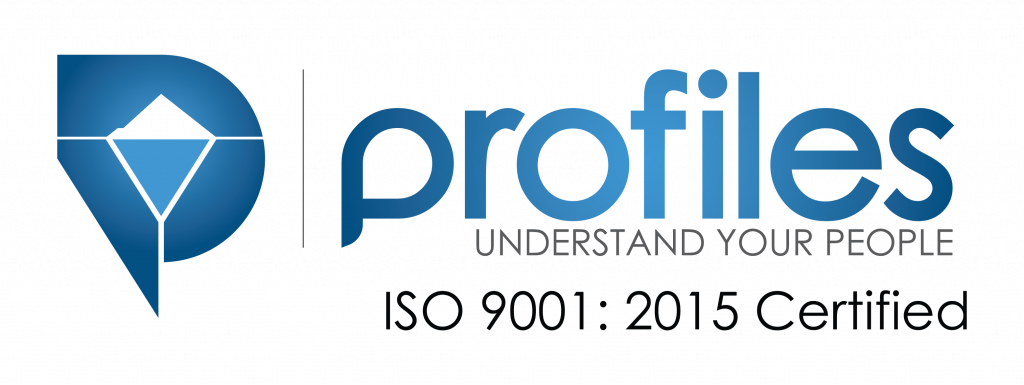With many businesses vying for skilled employees, acquiring top talent can be a competitive undertaking. A well-crafted job description, however, can help you attract ideal candidates. It summarizes everything a role entails and acts as the roadmap potential employees use to navigate new positions.
Although drafting a strong summary can be tricky, we’re here to walk you through the ins and outs and bring you one step closer to compelling, qualified job seekers who fit your vacant roles.
What is a job description?
Along with the organization’s expectations, a job description outlines a role’s:
- Essential functions
- Associated responsibilities
- Necessary skills and qualifications
- Compensation
It also communicates your company’s culture and values. The job description lays the foundation of a candidate’s understanding of an open position and informs them of what’s needed for successful collaboration.
What should be included in a job description?
Although the basic contents of a job description were described above, you need to be more detailed to differentiate your listing. To provide a more concrete understanding, we’ve included some basic example summaries for a software engineer role.
Job title
A job title is the position’s given name or designation. It describes the occupation, position, or function of the individual filling the role, or the product or service they’ll handle, if applicable.
Example:
Senior Software Engineer for eCommerce Platform X
Job summary
The job summary provides candidates a snapshot of an open position’s purpose and impact on the company. It could be a general statement that introduces the role’s key functions and responsibilities, but it should be enticing enough to convince potential employees to read the full description.
Example:
The Senior Software Engineer is pivotal in designing, developing, and maintaining our cutting-edge eCommerce Platform X.
As a part of our innovative team, you’ll be responsible for enhancing the platform’s functionality and performance, as well as ensuring seamless online shopping experiences for users.
Responsibilities and duties
This section clearly outlines the role’s day-to-day tasks and long-term responsibilities. Here, employ language that denotes action. Be specific as well, especially when giving a detailed explanation of what the position entails.
Example:
- System architecture and design
- Design robust, scalable software architecture for eCommerce Platform X in collaboration with cross-functional teams
- Lead the development of high-level design specifications that align with the business’s scalability requirements and goals
- Software development
- Write clean and easy-to-maintain code in relevant programming languages (Java, Python, etc.)
- Develop and implement new features, modules, etc., that enhance eCommerce Platform X’s functionalities
- Technical leadership
- Foster a collaborative environment and mentor junior engineers
- Continuously improve coding standards and best practices by providing technical expertise during code reviews
- Performance optimization
- Ensure a seamless and responsive user experience (UX) by identifying and addressing bottlenecks in eCommerce Platform X’s performance
- Maintain high-quality code and minimize errors by conducting thorough testing and debugging
- Collaboration and communication
- Translate business requirements into technical solutions by working closely with product managers, UX designers, and other relevant stakeholders
- Effectively communicate complex concepts to non-technical team members
Qualifications and skills
The description should clearly establish what’s required to succeed in the role. That may include educational attainment, level of experience, and hard and soft skills.
Include the tools candidates will use as well and distinguish between “must-have” and “nice-to-have” qualifications to attract the right applicants.
Example:
- Education:
- Bachelor’s or master’s degree in software engineering, computer science, or a related field
- Experience:
- 5+ years of experience in software development, primarily in the eCommerce space
- Strong background in system architecture and design
- Technical skills:
- Proficiency in Python, Java, or relevant programming languages
- Experience with API development and microservices architecture
- Familiarity with cloud computing (AWS, Microsoft Azure, etc.) and containerization (Docker, Kubernetes, etc.) platforms
- Leadership and collaboration:
- Ability to lead and mentor a team of software engineers
- Excellent communication and interpersonal skills
- Problem-solving and innovation:
- Track record of solving technical challenges by implementing innovative solutions
- Adaptability to evolving technologies and industry trends
Salary and benefits
Although it isn’t mandatory, being transparent about the role’s salary and benefits sets more realistic expectations and helps draw in more suitable candidates.
In fact, 62% of workers choose an employer based on how attractive compensation is. So, to make your organization stand out, highlight its unique perks and incentives.
Example:
- Salary:
- Base: $15,000/month
- Subject to annual increase
- Benefits:
- Health insurance (medical, dental, vision)
- 3 work-from-home days/week
- Vacation leave
- Sick leave
- Parental leave
- Retirement plan
- Bonuses:
- Annual bonus
- Retention bonus
- Longevity bonus
Our compensation package is competitive and comprehensive. We also offer advancement opportunities within the organization. By joining our team, you can enjoy a collaborative, progressive environment where contributions are valued and recognized.
A well-written job description makes all the difference
Having a meticulously prepared job description can enhance your recruitment efforts in multiple ways.
It sets clear expectations
A firm understanding of the potential role minimizes miscommunication and confusion among candidates.
By giving them a clear picture of their future responsibilities, how they’ll be measured, what it’ll take to succeed, and the position’s reporting structure, you avoid mismatches between their competencies and your requirements.
It enhances employer branding
Job descriptions serve as a window into your company’s culture and values, which are key components of employer branding.
A summary that positively represents the exciting opportunities and benefits you provide and what it’s like to work for you increases the value of joining your organization, making it more appealing to skilled individuals. It may even garner the attention of passive candidates.
It attracts quality candidates
By effectively communicating a role’s key responsibilities, qualifications, and benefits and clearly expressing your company’s values, you can easily catch the eyes of people who align with your culture and requirements.
Being thorough and clean also denotes professionalism and attention to detail — characteristics that top-tier talent greatly appreciate.
It streamlines recruitment processes
In fast-paced industries, efficient recruitment is essential. A well-written job description can streamline your process by helping candidates quickly understand a role and convincing them to send in an application.
If it resonates with your chosen audience well, it can also filter out individuals who aren’t a good fit and leave those who qualify. This saves you time and resources that would otherwise be spent sifting through irrelevant applications and conducting unnecessary interviews.
Mitigates legal risks
Job descriptions play a critical role in ensuring your company’s recruitment and hiring practices comply with employment laws and regulations. To adhere to legal guidelines and best practices, your summary should reflect:
- Essential role functions
- Physical or technical requirements (for professions in construction, for example)
- Any risks associated with the role (think of how truck drivers face road hazards)
It also avoids biases (gender, racial, etc.), which helps your company circumvent any instances of discrimination throughout its talent acquisition.
Key considerations for writing an effective job description
With a clear idea of how a polished job description benefits your recruitment efforts, here are the vital characteristics to keep in mind when crafting your own.
Accuracy and clarity
Accurately conveying an open position’s responsibilities and duties is a must. It’s imperative that you and your candidate understand what the job entails, so firmly establish:
- Its duties and tasks
- The role’s purpose
- The overarching goals it contributes to
- The methods, tools, and techniques necessary to succeed
Avoid overselling or underselling the position as well; that could lead to misunderstandings and disappoint a new hire after they realize the job was misrepresented. For instance, don’t say an employee will be visiting clients if their main responsibility is entering data behind a desk.
Depth
In addition to being clear and accurate, a job description must also be comprehensive. Besides the foundational details we’ve gone through, you can also outline the personal characteristics expected from the potential employee and who they’ll report to.
Your writing voice is highly influential to attract ideal applicants, so incorporate a bit of personality, make it compelling, and convey the company’s culture.
Compliance
We mentioned how well-written job descriptions mitigate legal risk. That’s because they’re typically regarded as legal documents that can be referred to in disputes or arguments.
So, once you’ve prepared a draft, give it to an employment lawyer or HR consultant for review. To avoid discrimination, eliminate any references to ethnicity, religion, age, gender, mental disability, etc.
Revisions
Industries evolve constantly, and jobs follow suit. When that happens, evaluate whether it’s time to revise a description. For instance, what you used to hire a brand manager two years ago may not work in today’s context.
So, to redefine a role, work with whoever knows it best, whether they be a current employee or someone who used to fill it but moved on to another position.
Job description writing red flags
Speaking of revisions, to help you tell whether or not your job description needs reevaluation, here are some signs to look for.
Unstructured formatting
If your job description is disorganized, it’ll come off as unprofessional, misrepresent your company, and greatly deter applicants.
Typically, this is candidates’ initial encounter with your organization throughout their job search, so you need to deliver a strong first impression via a well-structured and comprehensive job description.
You’re not reaching the right candidates
If you regularly attract applicants who are a bad fit, you probably aren’t pushing your job description to the right people.
Treat it like marketing and your ideal candidates as you would a target audience: Find out where they seek employment and what language appeals to them. If it doesn’t match their interests and behaviors, you may need to change the keywords or post the listing somewhere else, such as on social media, your website, or other jobs boards.
Vague language
If a job description doesn’t clearly explain what a role entails, it will either confuse applicants or attract the wrong ones. When multiple candidates ask for clarification about an open position, that also indicates a need for revision.
So, be specific. Upon reading your job description, potential employees must easily be able to gauge whether or not they’re a fit for a role. Plainly outlining all of its functions, responsibilities, requirements, and compensation will cut down on mismatches while helping you stand out as well.
It’s all about you
Hiring is a two-way street. If your job description is all about the company’s needs, you’ll turn away candidates looking for personal and professional growth and competitive compensation.
Make sure you highlight the benefits an open role can provide. Clearly state whether potential employees will be entitled to paid vacations, learning and development opportunities, and other perks that will entice them not only to apply but also stay.
It’s too demanding
Don’t intimidate top applicants by listing your nice-to-have qualifications as must-haves. The former, like an industry certification, meet your business’s basic needs while the latter are desired but not mandatory. You need to distinguish between core competencies necessary to succeed from those that allow individuals to go above and beyond because:
- Setting unrealistic expectations can discourage candidates from applying for your job opening.
- You avoid eliminating valuable talent, especially those without the added-value skills.
Determine what skills a potential employee must bring with them and which can be trained or taught.
Lack of inclusivity
According to 76% of job seekers, diversity and inclusion are major factors in assessing companies and job offers.
If you notice any mention of age, gender, ethnicity, religion, disability, or the like in your description, remove them. Use inclusive messaging instead to help you attract a wider candidate pool.
How to write compelling job descriptions
With all the bases of job description writing covered, creating your own comes next. Here are some best practices that can help you inspire the right candidates to vie for your open roles.
Understand your audience
Think about the individuals you want to attract. The voice you’ll use and the key aspects you’ll highlight will vary based on who you hope to hire: Are you after recent college graduates brimming with potential, or more experienced professionals and industry experts?
Young talent that just earned their degrees will most likely be drawn to fast-paced work environments brimming with growth opportunities. Experienced professionals with kids, meanwhile, will appreciate roles that are more flexible and companies with a family-friendly culture.
Create a list, then write the description
Displaying a role’s qualifications and responsibilities in a bullet list isn’t engaging. Instead, a helpful approach is to compile all necessary information in a list and then expand it into a more detailed description. For instance, rather than simply writing, “Able to type at least 100 WPM,” say, “A potential candidate must possess a typing speed that can keep up with fast-speaking managers.”
Proudly showcase your organization and its people
One quarter of participants in a LinkedIn survey said culture is a top reason why they changed jobs. So, to excite candidates about an open role, highlight who they’ll work with and the organization they’ll be a part of.
If you have a strong leadership team, showcase its members. If an employee published a best-selling book about your industry, boast about it. Showing you have a captivating culture filled with amazing people will pique applicant interest.
Add personality
Incorporating character into your job descriptions goes a long way toward engaging potential employees. It gives candidates a preview of your company’s culture and brand personality while enriching the appeal of an open role.
For instance, rather than a generic, “We’re looking for a qualified programmer,” you could say, “We’re looking for a programming enthusiast who loves building mobile games as much as we love playing them.”
Highlight the perks
With 66% of employees saying they’d leave their current job for another if it offered better benefits, it’s clear perks play a massive role in attracting (and retaining) talent. So, make sure to shine a light on your advantages: Is your company’s vacation policy generous? Do employees enjoy free parking in a busy metropolitan area or receive transportation allowances? Is there an abundance of upskilling and reskilling opportunities?
Industry-related perks are also enticing. Imagine you’re in the wine business and find a candidate for a marketing position who’s passionate about it. Wine tasting opportunities and a free bottle every month are likely to draw them in.
Optimize for search engines
Search engine optimization (SEO) best practices will boost your job description’s visibility. Inserting keywords relevant to your audience will raise your post’s ranking on Google and land it in front of the right people.
Keywords help with readability as well. Prospects who simply scan the details of an open role, for instance, can focus on terms that stand out to them.
Seek feedback
Ask for input when creating or revising your job description, whether it be from employees who fill a similar role, those who have previous experience with it, or candidates who ask questions. Their insights will help you solidify and include:
- An open position’s responsibilities
- Its essential hard and soft skills
- The tools the job will require
- Its upsides and challenges
- Its working conditions
These elements are foundational to produce a comprehensive description that accurately represents an open role and your organization’s culture.
Wrapping up — Be authentic in your job descriptions
It goes without saying that job descriptions need to be accurate, detailed, and, most importantly, truthful. Eliminate any information that may be misleading and use clear language to attract the best candidates for an open role. Even if you craft a compelling summary and draw in candidates for your hiring process, they’ll walk out if they realize the job isn’t the one they applied for.
Since most job descriptions possess similar basic components, be sure to add flair to yours and highlight your company’s unique advantages so it stands out to candidates. Incorporate the other considerations and best practices we’ve discussed to bolster your recruitment efforts and pull in applications with exceptional talent.




